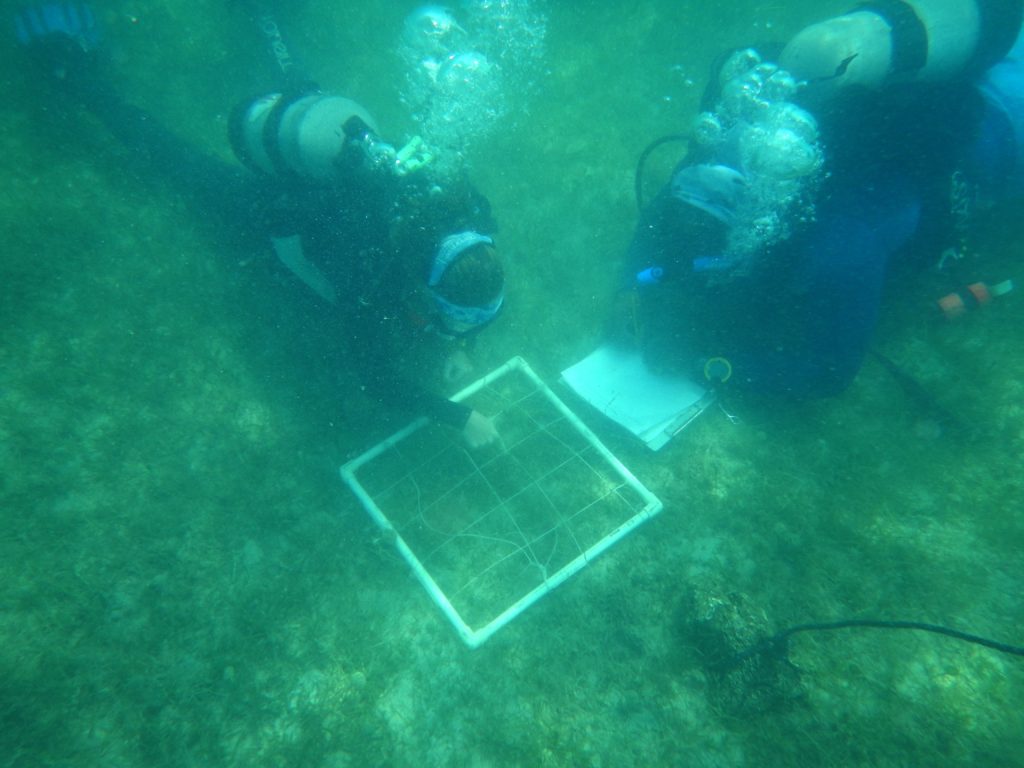CHARLOTTE AMALIE — The University of the Virgin Islands’ Masters of Marine and Environmental Studies (MMES) 2015 cohort has had their capstone manuscript published in the Public Library of Science (PLOS ONE).
The manuscript, altered juvenile fish communities associated with invasive Halophila Stipulacea seagrass habitats in the U.S. Virgin Islands, is the culmination of research efforts by the 2015 cohorts.
The students who have worked so diligently on this project are Lauren K. Olinger, Sarah L. Heidmann, Allie N. Durdall, Colin Howe, Tanya Ramseyer, Sara G. Thomas, Danielle N. Lasseigne, Elizabeth J. Brown, John S. Cassell, Michele M. Donihe, Marieke D. Duffing Romero, Mara A. Duke, Damon Green and Paul Hillbrand. Their advisory team include UVI professors Kristin R. Wilson Grimes, Ph.D., Richard S. Nemeth, Ph.D., Tyler B. Smith, Ph.D., and Marilyn Brandt, Ph.D.
“Publication of this work in an international, peer-reviewed journal speaks to the high quality of research being conducted by Masters of Marine and Environmental Studies students at the University of the Virgin Islands,” said Dr. Kristin R. Wilson Grimes, University professor. “These students, their advisors, the program, and the University, should be very proud. This study provides a solid foundation for future work that examines the impacts of this invasive seagrass species, here in the territory and beyond,” Dr. Wilson Grimes said.
The invasive seagrass Halophila Stipulacea is now found in abundance throughout the territory and is displacing native seagrass species. This seagrass’ hardiness and impressive ability to propagate is a contributing factor to its success. The cohort dug deeply into investigating the effects Halophila is having on the environment as it displaces native seagrass species, and its effect on the marine animals that live in the seagrass beds. Among those animals impacted are the juvenile life stage parrotfish and critically endangered Nassau grouper.
Results from this study showed that the invasive seagrass had reduced fish diversity and altered juvenile fish community structure compared to native seagrasses. The catch from the invasive seagrass, comprised mostly of snappers and grunts, more closely resembled the catches from bare sand. Unlike native seagrass, the invasive seagrass had a notable scarcity of herbivores (parrotfishes and surgeon fishes) as well as goatfish. This study provides evidence of reduced juvenile fish family diversity and exclusion of herbivores and diurnal carnivores in H. stipulacea, signifying further the need for management of this invasive seagrass.





